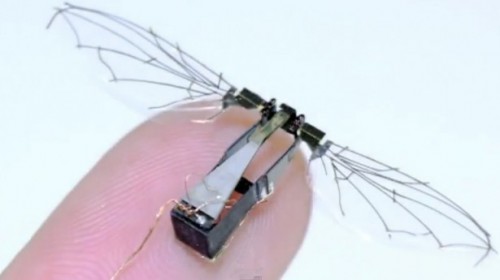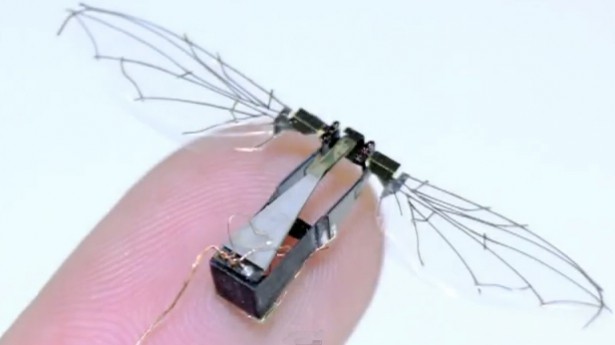
By David Ponce
Unmanned aircraft such as surveillance drones are really nothing compared to the stuff the Air Force is working on. Miniaturization marches onwards and gives rise to the sort of little devices you see in the picture.
At the Micro-Aviary at Wright-Patterson Air Force Base, researchers rig the walls with super-sensitive motion capture sensors that track a tiny plane or helicopter’s position ”within about a tenth of an inch,” according to researcher Greg Parker. Information from those sensors helps engineers develop “flapping-wing flight” drones — “very, very small flapping-wing vehicles,” in Parker’s phrase.
And how. One of the vehicles on display in the video above, released by the Air Force Research Laboratory at Wright-Pat, is a robot dragonfly. It doesn’t appear to be much more than a circuit board, a super-tiny motor and two insect-like wings
No camera on that “insect” yet. However we can deduct a couple of things from the information that is given to us. The bleeding edge of military research is always and understandably classified. So if we’re being shown something like this little dragonfly in the picture, you can make a safe bet that there’s something far more advanced already in production. What shape this technology would have is pure speculation, but this writer is picturing this: swarms of semi-autonomous insect-sized flying bots with video reconnaissance capabilities, all simultaneously feeding back to a base station. They’d be impossible to fully shoot down and would be indistinguishable from actual insects. Are we there yet? There’s no way to know right now.
VIA [ The Telegraph ]





